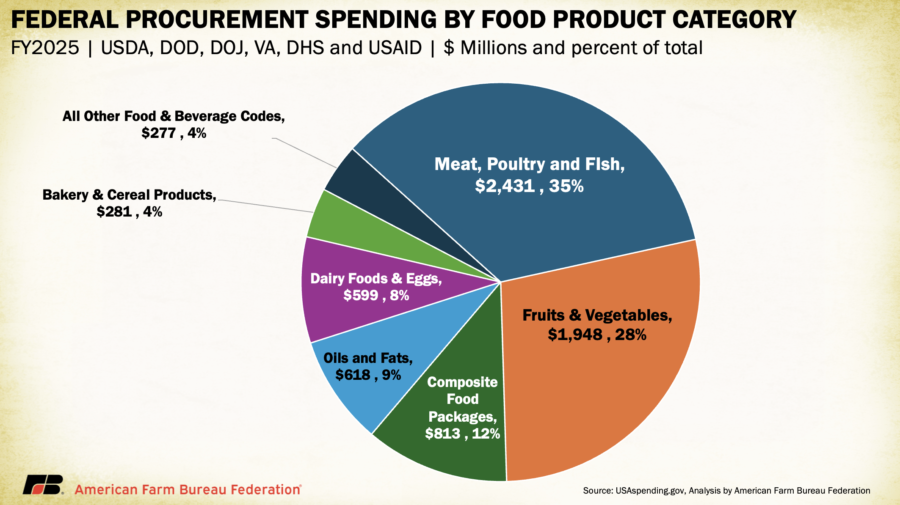This Market Intel reviews the history and structure of domestic preference policies in federal food procurement, their impact on farm demand, and where opportunities remain to strengthen oversight and expand the use of U.S.-grown products across institutional nutrition programs.
Historical Roots of ‘Buy American’ Policy
Federal preference for U.S.-grown foods dates back nearly a century and was driven by economic, food security and national defense priorities. The Buy American Act of 1933 first required federal agencies to purchase domestic goods “to the maximum extent practicable,” laying the groundwork for sourcing U.S.-made and U.S.-grown products whenever feasible. Eight years later, the Berry Amendment of 1941, passed during World War II, specifically required the Department of Defense to procure food, clothing and other materials produced in the United States, a rule that continues to guide military food purchases today.
Post-war legislation linked domestic farm support directly with public feeding programs. The Agricultural Adjustment Act of 1935 created Section 32, dedicating a portion of customs revenues to purchasing surplus U.S. commodities for distribution in nutrition programs. When Congress passed the National School Lunch Act of 1946, it formalized this connection; school meals would not only improve child nutrition but also create a steady outlet for domestically produced food.
Congress later reinforced these requirements. The William F. Goodling Child Nutrition Reauthorization Act of 1998 added an explicit Buy American clause requiring schools to purchase domestic foods “to the maximum extent practicable.” Subsequent executive orders, most recently in 2021, have strengthened these rules across agencies, underscoring bipartisan recognition that U.S.-grown food purchases bolster both food security and the farm economy.
Federal Spending on U.S.-Grown
In fiscal year 2025, the federal government purchased $6.9 billion in U.S.-grown food and agricultural products across multiple agencies, according to USAspending.gov. While that represents less than 1% of total annual at-home food spending by American households, it plays an outsized role in supporting farm demand and market stability.
USDA accounted for $3.6 billion, or about 52%, of total federal food purchases. The Department of Defense followed with $2.8 billion (41%), supplying military installations and service members across the globe. The remaining 7% came from other agencies, including the departments of Veterans Affairs, Justice, and Homeland Security, and the U.S. Agency for International Development, which use American-grown food in hospitals, correctional facilities, emergency response programs and international food aid.

Annual totals fluctuate based on economic and policy conditions. In fiscal year 2020, for instance, federal food purchases peaked at $11 billion as Congress and USDA deployed emergency programs during the COVID-19 pandemic. From fiscal year 2019 through fiscal year 2024, overall procurement remained above earlier levels, reflecting supplemental “bonus buys” to stabilize farm prices and replenish food assistance pipelines.
By commodity group, meat, poultry and fish products made up the largest share of fiscal year 2025 spending at $2.4 billion (35%), followed by fruits and vegetables at $1.9 billion (28%). Composite food packages, multi-ingredient items such as ready-to-eat meals, combination entrées or bundled canned goods used in food aid and institutional feeding, accounted for $813 million (12%). The remainder was divided among oils and fats (9%), dairy and eggs (8%), bakery and cereal products (4%) and other categories (4%).

Click here to see more...